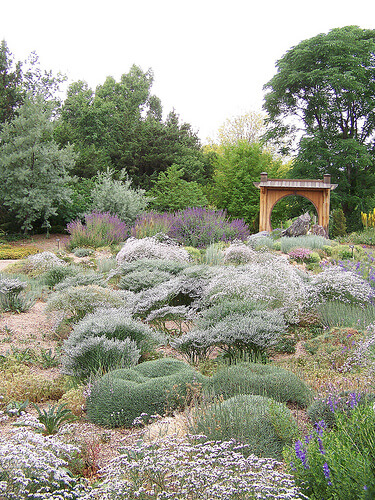
As Georgia’s population continues to grow, water becomes more limited and conservation is critical. Outdoor water use soars in the summer as people try to maintain their landscapes. For those unaware, xeriscaping is a seven-step approach to landscaping that aims to conserve water and protect the environment at the same time.
How do you begin?
- The Design Process: When designing a water-smart landscape, functionality and efficiency is key. Group plants by zone according to the amount of water they require: high, medium and low. You want 60% or more of your landscaping to make up your low-water use zone where plants are only watered when first planted. Thirty percent of your landscaping should be medium-water use plants that require moisture only when they show signs of stress. And the remaining 10% will be high-water use plants, meaning they require consistent and constant watering to survive.
- Soil Considerations: Evaluate your soil to determine what additives you may need in order to provide your landscape a better place to grow. Consider adding lime, fertilizers and organic material like compost to improve the health of your soil. Professional soil testing may be necessary for a detailed analysis. Additionally, you’ll want to consider the topography of the area, plant drought resistant plants at higher levels and water-loving plants at lower levels.
- Selecting Your Plants: Plant selection is an integral part of xeriscaping, but with so many plants available, this step can be confusing and overwhelming. Ask for suggestions at your local organic nursery. You’ll want plants that don’t require much water and that can adapt to the soil and environmental conditions in your area. Consider the following when making your decisions: sun/shade exposure and intensity, wind conditions, drainage and average temperature range.
- Turf Areas: Since turfgrass often requires frequent irrigation, minimizing its use is ideal. When it is included in your xeriscape design, use drought resistant options like Bermudagrass.
- Watering: Designing an effective irrigation system is a major part of xeriscaping. Notice this step comes late in the process, once the landscape has been designed. You’ll want an efficient irrigation system with little waste, designed according to your plants’ needs. Think about using drip irrigation for flowers and shrubs as an eco-friendly alternative. If you don’t have a sprinkler system, remember to water efficiently with these smart watering tips.
- Mulching: Mulch helps retain soil moisture, assisting your efforts to conserve water. Mulch also offers many other benefits including reduced weed growth, erosion and stabilized soil temperatures.
- Maintaining: Xeriscaping offers low maintenance landscaping since it requires less water, pruning, fertilization and pesticides. You’ll want to prune and fertilize sparingly as to not constantly encourage new growth that would require more water. Grasscycling is an excellent organic component of xeriscaping that recycles grass clippings back into the lawn areas for increased nitrogen.
If implemented effectively, this water-wise landscaping method can cut outdoor water use in half while providing beautiful surroundings that can be enjoyed throughout the year, regardless of the weather. Even if you’re not embarking on a complete re-design of your landscape, you can easily conserve water with just a few minor changes like adding mulch, relocating plants and watering smarter.
photo credit: Rock Garden via photopin (license)

